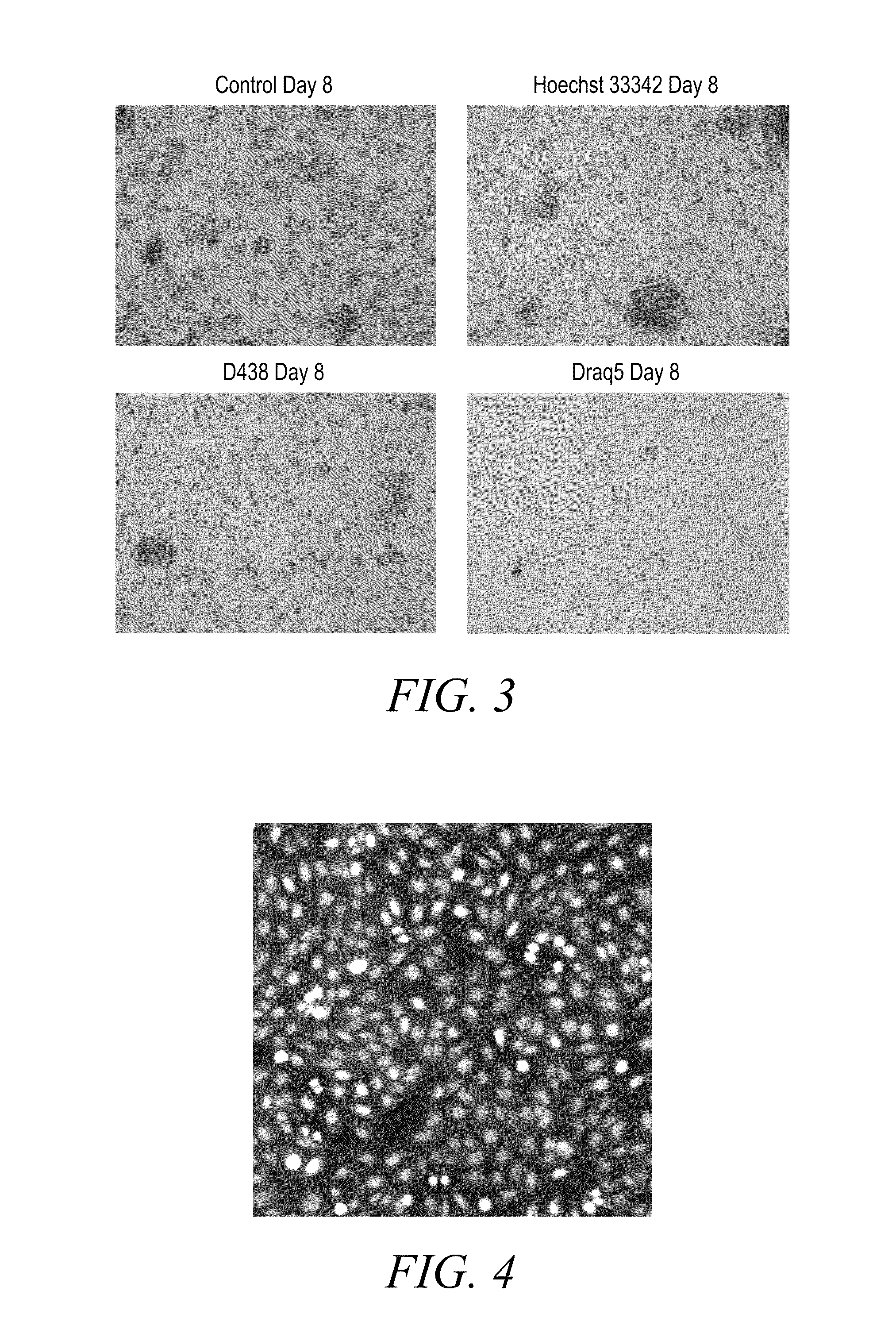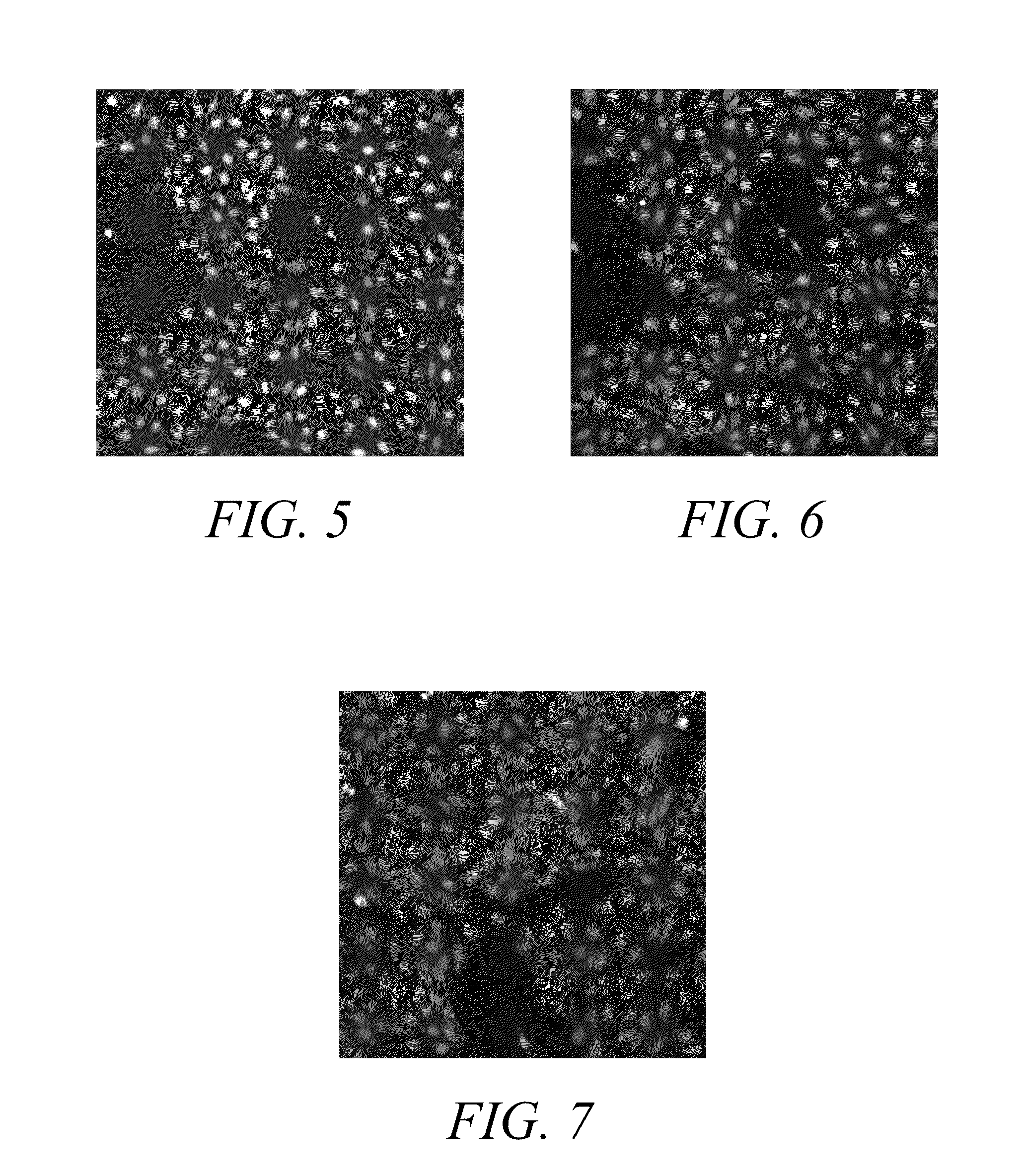Anthraquinone based near IR emitting compounds and uses thereof
anthraquinone and emitting compound technology, applied in fluorescence/phosphorescence, anthracene dyes, biological testing, etc., can solve problems such as excessive variability
- Summary
- Abstract
- Description
- Claims
- Application Information
AI Technical Summary
Benefits of technology
Problems solved by technology
Method used
Image
Examples
example 1
Synthesis of Compound 1
[0114]A mixture of 50 mg of 1,5-diamino-4,8-dihydroxyanthra-9,10-quinone, and 122 mg of α,α′-dibromo-p-xylene in 2 mL of DMF was heated at 85° C. for 1.5 hours to generate the crude benzyl bromide (Compound 1) after the removal of all volatile components.
[0115]
example 2
Synthesis of Compound 2
[0116]The crude benzyl bromide (Compound 1) was dissolved in 5 mL of dimethylamine solution (2.0 M in methanol) and stirred at room temperature overnight. Volatile components were evaporated under reduced pressure and the product (Compound 2) was purified on a LH-20 column and then HPLC. MS (ESI+) [m / z]: 565.8 [M+H]+.
[0117]
example 3
Synthesis of Compound 3
[0118]A mixture of 3-chloro-1-propanol (10 g), and sodium azide (13.7 g) in water (50 mL) was heated at 90° C. overnight. Compound 3 was obtained by ether extraction.
[0119]
PUM
 Login to View More
Login to View More Abstract
Description
Claims
Application Information
 Login to View More
Login to View More - R&D
- Intellectual Property
- Life Sciences
- Materials
- Tech Scout
- Unparalleled Data Quality
- Higher Quality Content
- 60% Fewer Hallucinations
Browse by: Latest US Patents, China's latest patents, Technical Efficacy Thesaurus, Application Domain, Technology Topic, Popular Technical Reports.
© 2025 PatSnap. All rights reserved.Legal|Privacy policy|Modern Slavery Act Transparency Statement|Sitemap|About US| Contact US: help@patsnap.com



